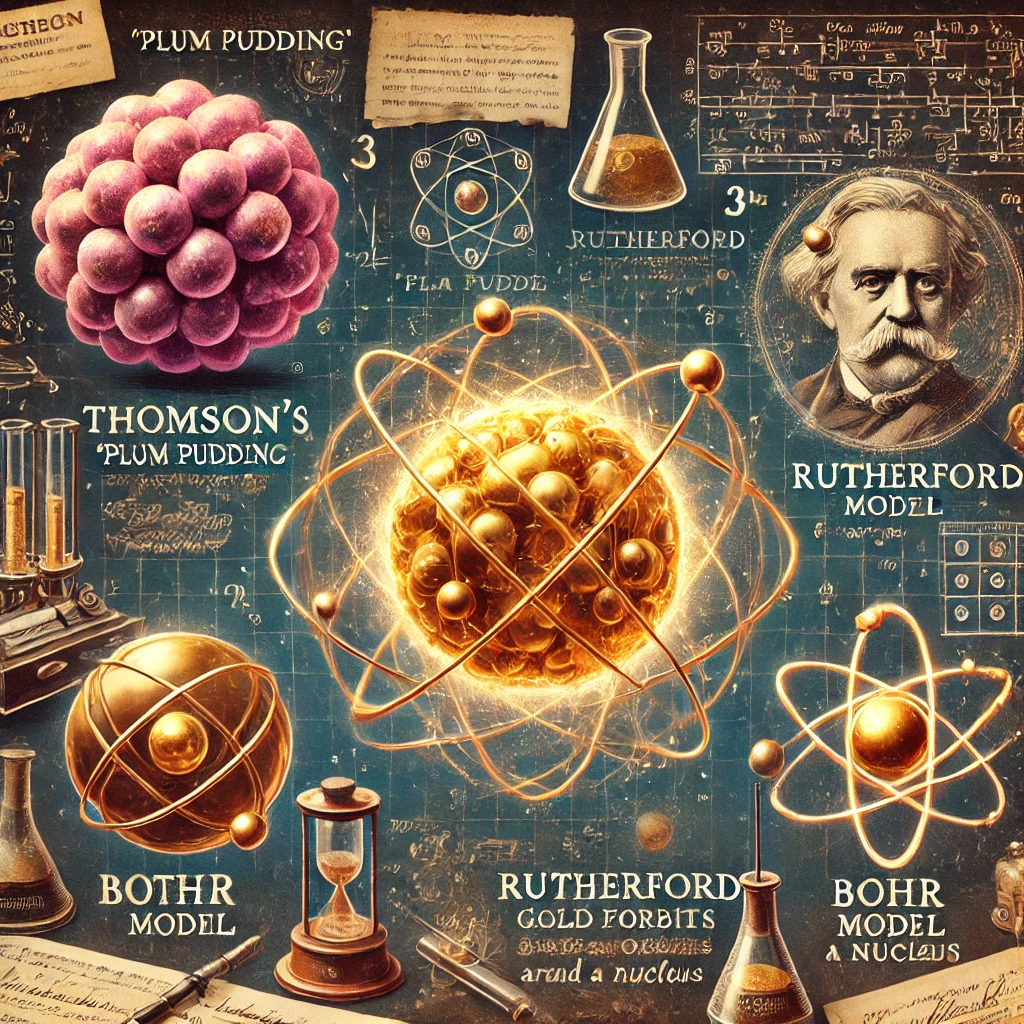While the atom was once thought of as an indivisible particle, modern science has revealed that it is a complex structure composed of electrons, protons, and neutrons. Thomson’s discovery of the electron, Rutherford’s atomic nucleus experiments, and Bohr’s hypothesis of energy quantization were important contributions to the evolution of the atomic model.
Whereas in the past it was thought that matter was composed of small, indivisible atoms, today we know that atoms are complex structures made up of electrons, protons, and neutrons. This discovery was made thanks to numerous experiments and studies that came with the development of science.
The electron, which is negatively charged, is the smallest and lightest of the three particles. In 1897, Thomson discovered the electron in a gas discharge tube experiment by identifying the flow of negative electricity. Electrons with the same negative charge repel each other, making it difficult for them to cluster in an atom. To explain why electrons do not scatter and maintain the shape of an atom, Thomson proposed the “raisin bread model”. The idea was that atoms are normally electrically neutral, with positive electricity spread evenly throughout the atom like bread dough, and electrons dotted like raisins. This model was an important step in understanding atomic structure at the time, but it required further study.
Protons, which are positively charged, are roughly 2,000 times heavier than electrons, so they are not as easy to isolate or accelerate with small energies as electrons. However, after Marie Curie discovered radium in a natural mineral in 1898, a new experiment became possible. Radium is strongly radioactive, emitting positively charged alpha particles with great energy. In 1911, Rutherford conducted an experiment in which he bombarded thin gold foil with alpha particles emitted by radium. The results showed that the alpha particles passed through most of the gold foil but bounced off in some spots. From this experiment, Rutherford realized that positive electricity was not spread throughout the atom like bread dough, but was concentrated in a very small area, which he called the nucleus. Based on his experiments, he modified Thomson’s model by proposing the ‘solar system model’, which states that just as the sun attracts planets to rotate, the positively charged nucleus attracts electrons to rotate.

However, Rutherford’s model did not explain the unique spectrum that each atom exhibits. In 1913, Niels Bohr proposed something called the energy quantization hypothesis, which states that electrons can only go in specific orbits around the nucleus. This allowed him to explain the spectrum of the hydrogen atom, which has a simple structure of one proton and one electron. Bohr’s hypothesis was a major contribution to the subsequent development of atomic models.
In 1919, Rutherford performed a collision experiment on a nitrogen atom and identified the proton that was ejected from the nucleus. He also predicted the presence of neutrons, a non-electric particle, in the nucleus. In 1932, Chadwick discovered the neutron, a particle that is electrically neutral and similar in mass to the proton. This led to a deeper understanding of the structure of the atomic nucleus.
In 1935, Hideki Yukawa of Japan proposed the hypothesis that neutrons attract protons by causing nuclear forces to act through particles called mesons. In an atom with multiple protons, protons with the same positive electrons try to repel each other, but only a force greater than this repulsion can keep multiple protons bound to the nucleus. Using his proposal, it was possible to explain why protons cluster in the nucleus instead of scattering. This was a major step forward in understanding the stability of the atomic nucleus.
As you can see, the study of atomic structure has played a very important role in the history of science. From early simple models to modern complex models, scientists have constantly expanded our understanding through experimentation and research. These advances have had a profound impact not only on physics, but also on many other fields of science, including chemistry and biology. An understanding of atomic structure is an important foundation for us to delve deeper into the nature of matter and, in turn, develop new technologies and applications.
 I’m a blog writer. I want to write articles that touch people’s hearts. I love Coca-Cola, coffee, reading and traveling. I hope you find happiness through my writing.
I’m a blog writer. I want to write articles that touch people’s hearts. I love Coca-Cola, coffee, reading and traveling. I hope you find happiness through my writing.